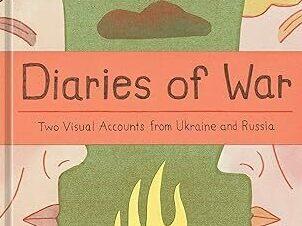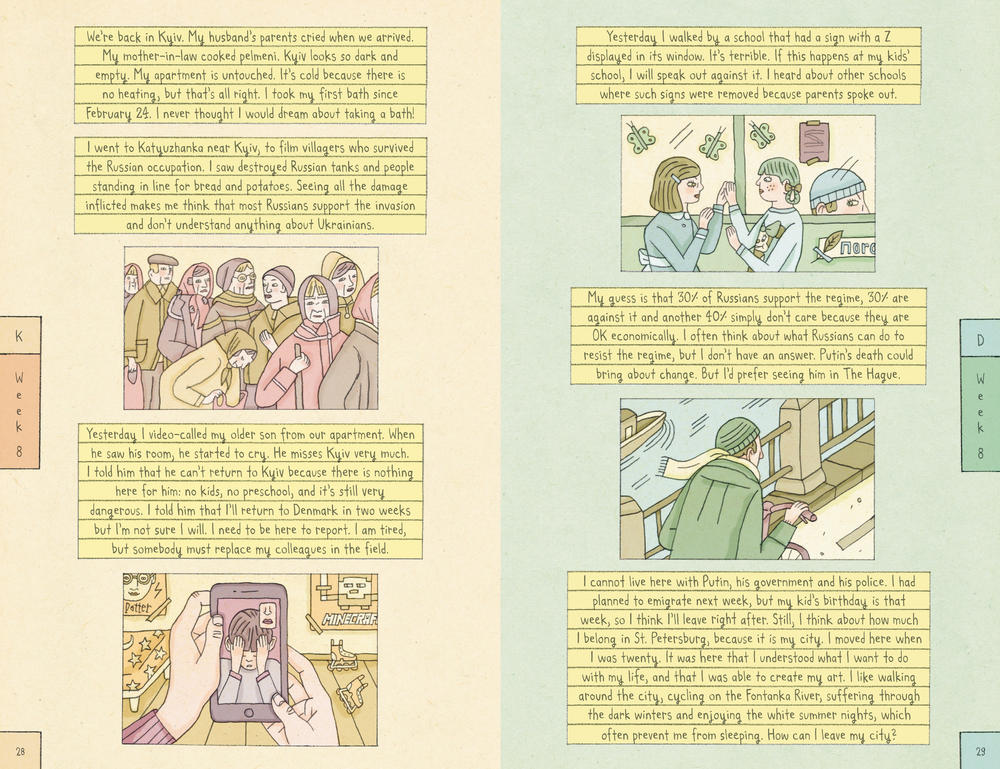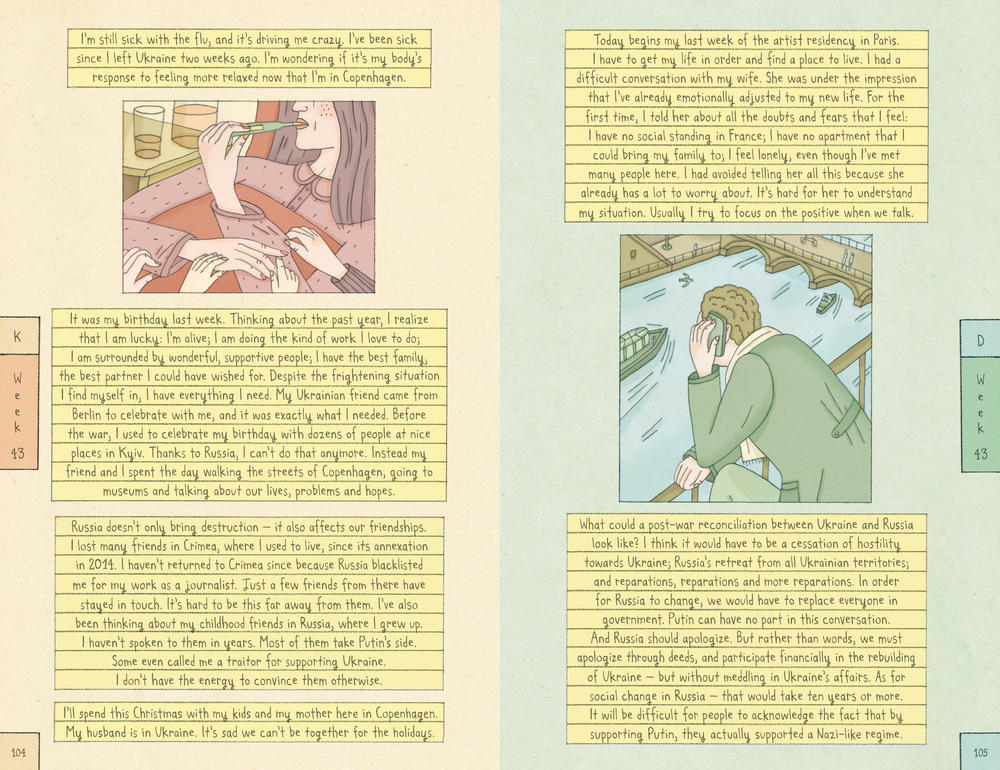Section Branding
Header Content
'Diaries of War' traces two personal accounts — one from Ukraine, one from Russia
Primary Content
When it comes to critical events happening around the globe, sometimes individuals turn to the past — the sequence of occasions and forces that led to a particular moment — in an attempt to understand. And sometimes they aim to look closely and directly at what is unfolding as it occurs.
Both of these kinds of careful efforts — the intensive quest for truth by looking to the past, or by attending to the present — are urgently needed in times of crisis.
Self-described visual journalist Nora Krug undertakes the latter, helping her readers look more closely and deliberately into day-to-day experiences of war, with Diaries of War: Two Visual Accounts from Ukraine and Russia. In the book, Krug, who is German-born and now lives and works in the United States, follows the day-to-day lives of two people in the year after Russia's 2022 renewed attacks against Ukraine, a full-scale invasion that continues to this day.
These war diaries, as Krug terms them, are in fact culled from text exchanges and interviews between the author and illustrator and two real people whose full names have been withheld. They stretch across a whole year, with Krug's drawings accompanying words taken from each of her subjects, and her own brief introductory remarks opening the book.
First there is K., a journalist based in Kyiv. Born in western Russia when it was still part of the Soviet Union, K. moved to Crimea, Ukraine as a young teen. Now she is a journalist often reporting from the frontlines, and raising two young children, ages two and six, with her husband when the book's coverage begins. Early into the diaries, K. and her husband send their children to Denmark to live with her mother. She is the only one of the pair who is able to visit them, as men in Ukraine between ages of 18 and 60 are restricted in leaving the country so that they can be available to fight the war. K. shuttles back and forth regularly between her family members, reporting, "My sons have become children of war. Their generation is broken."
The second story told in these pages is of D., an artist born in Soviet Russia who has lived in St. Petersburg since he was 20. D. now lives there with his wife and two children, who are nine and ten years old, as well as their dog. He explains early on how he opposes the war, though he is, in his own words, not an activist, and he fears speaking out publicly. When the book opens, he explains how he wants to emigrate with his family, but he is the only one with a passport and visa, which makes things tricky. Over the year, Krug tracks D. as he shuttles from one country in the EU to the next, attempting with lots of difficultly to find a way of having his family join him in the long term. Eventually, he also stays out of Russia in order to avoid being drafted to fight for a war he does not support. As time goes on, his opposition only increases.
The stories of K. and D. are told throughout the book on pages that face one another, with each side tinted in a slightly different color background. Krug illustrates each page with simple but often powerful images that emphasize her subjects' mental or physical states, or underscore both the painful and occasionally beautiful moments they are witness to. Both narrators' words are scripted in matching yellow blocks, with Krug's fastidious handwriting connecting the two perspectives.
Despite these visual parallels, their experiences are often diametrically opposed. Early on, for example, as D. laments the impact that the war has had on his children; he mentions their disappointment about a Nintendo game they won't be able to get because the company has halted its operations in Russia. "I'm still in stress," D. narrates above this anecdote, "but not in panic like I was during the first days." On the opposing page, K.'s narrative tells a very different story. Krug draws an image of young children sleeping between their parents in bed, as the mother, depicted beside them, is very much in a continuous panic. "I hardly slept last night. The sirens started at 2:30AM, and then I was lying there listening to the explosions." Though her family is OK for the moment, the immediate danger is clear. People, including colleagues, are being killed daily around her. War ages her prematurely.
In Krug's previous book, Belonging: A German Reckons with History and Home, she grappled with her own family history, including her grandfather's involvement in the Nazi regime as what was termed a "follower" during denazification. In addition to telling their stories through traces of whatever documents she could find, in Belonging Krug also brought in her own perspective as well as the conversations she had with other family members while finding her way to the reality of what had taken place before her time. "Facts are important and incontestable," Krug writes here in her introduction. "But personal narratives shed light on different aspects of the truth and are therefore important components of it."
As in Belonging, with Diaries of War Krug incorporates her careful research and observation skills alongside attentive and thoughtful design and illustration to tell a multilayered story of the many emotional and psychic ravages of war. K. describes many moments of hopelessness, and her frequent sense of a lost future. Nonetheless, through it all, her thirst for life endures.
"I don't ask myself what I'd be willing to die for," she writes at one point soon after hearing of her friends who have been captured by Russians. "I simply plan not to die. My goal is to survive, to help other people survive this war and to preserve the Ukranian heritage."
Tahneer Oksman is a writer, teacher, and scholar specializing in memoir as well as graphic novels and comics. She lives in Brooklyn, NY.
Copyright 2023 NPR. To see more, visit https://www.npr.org.



